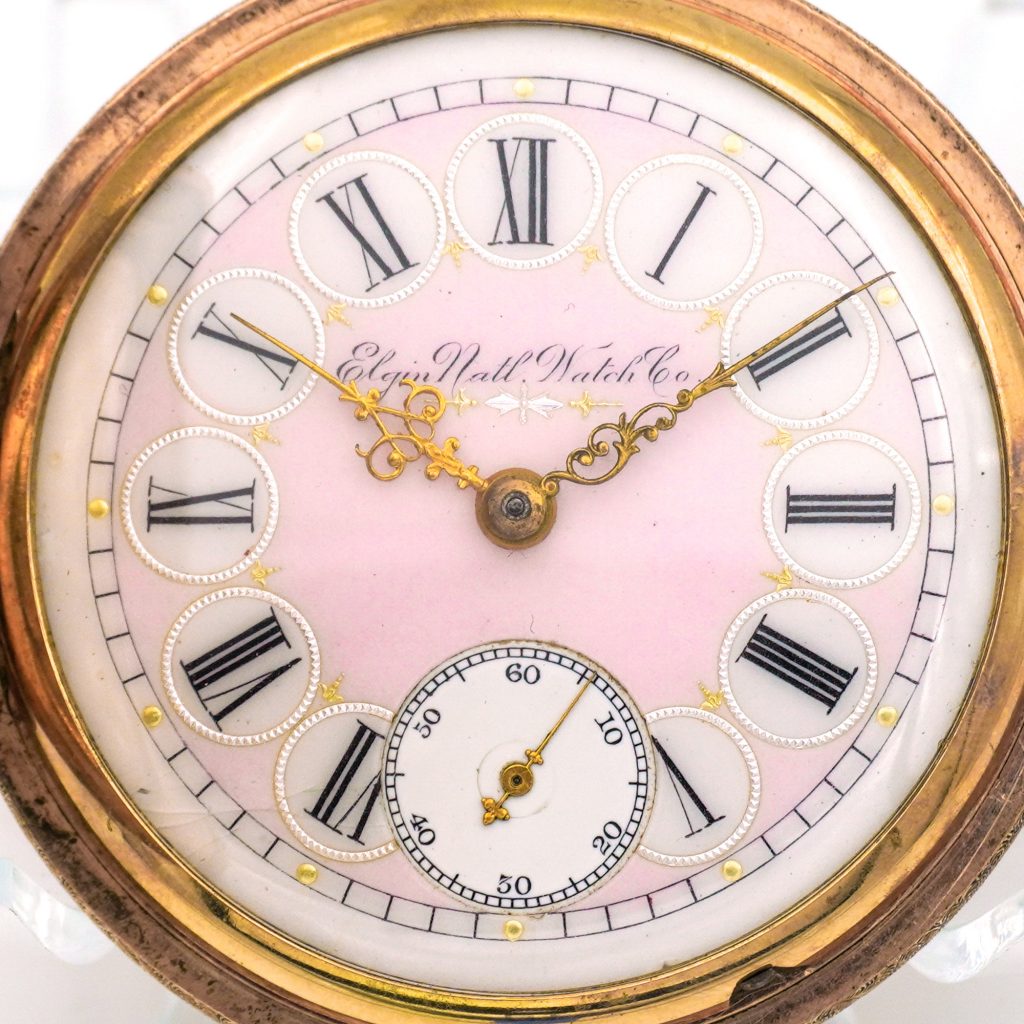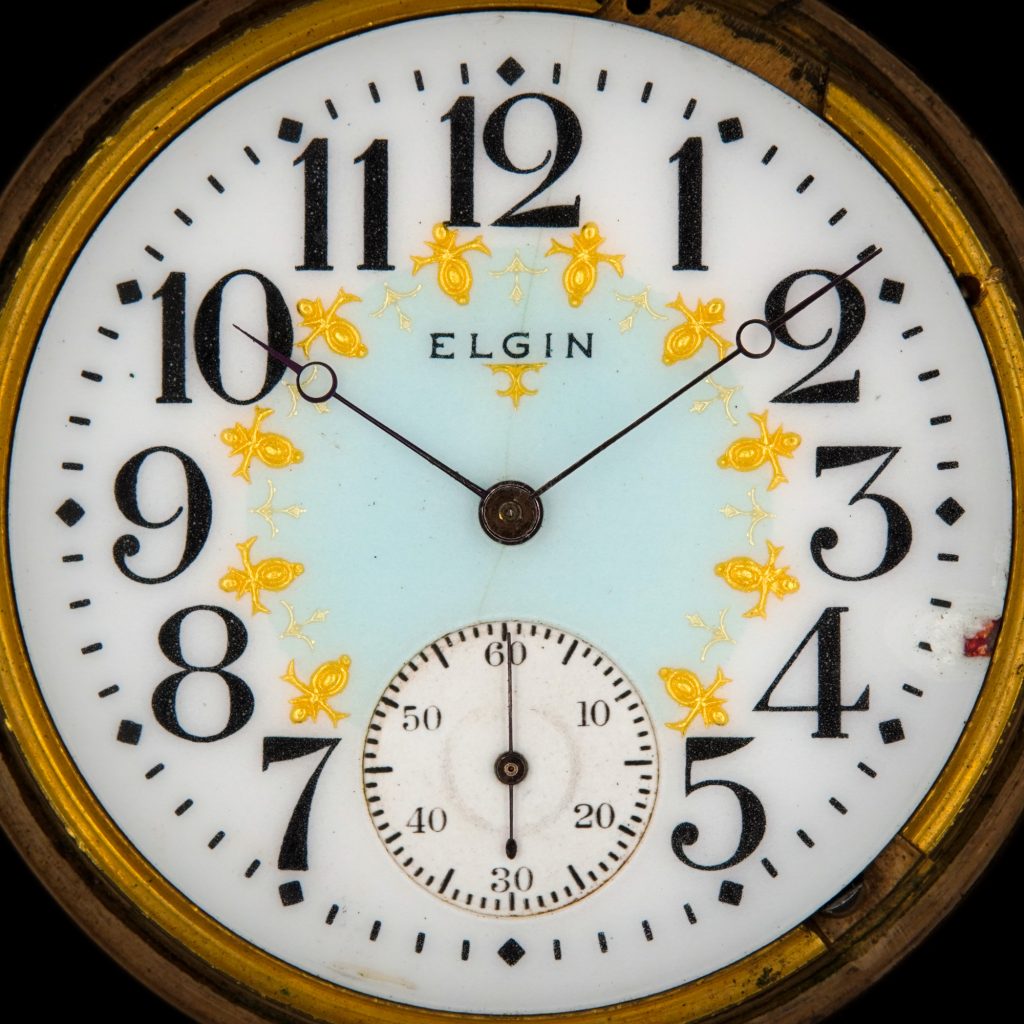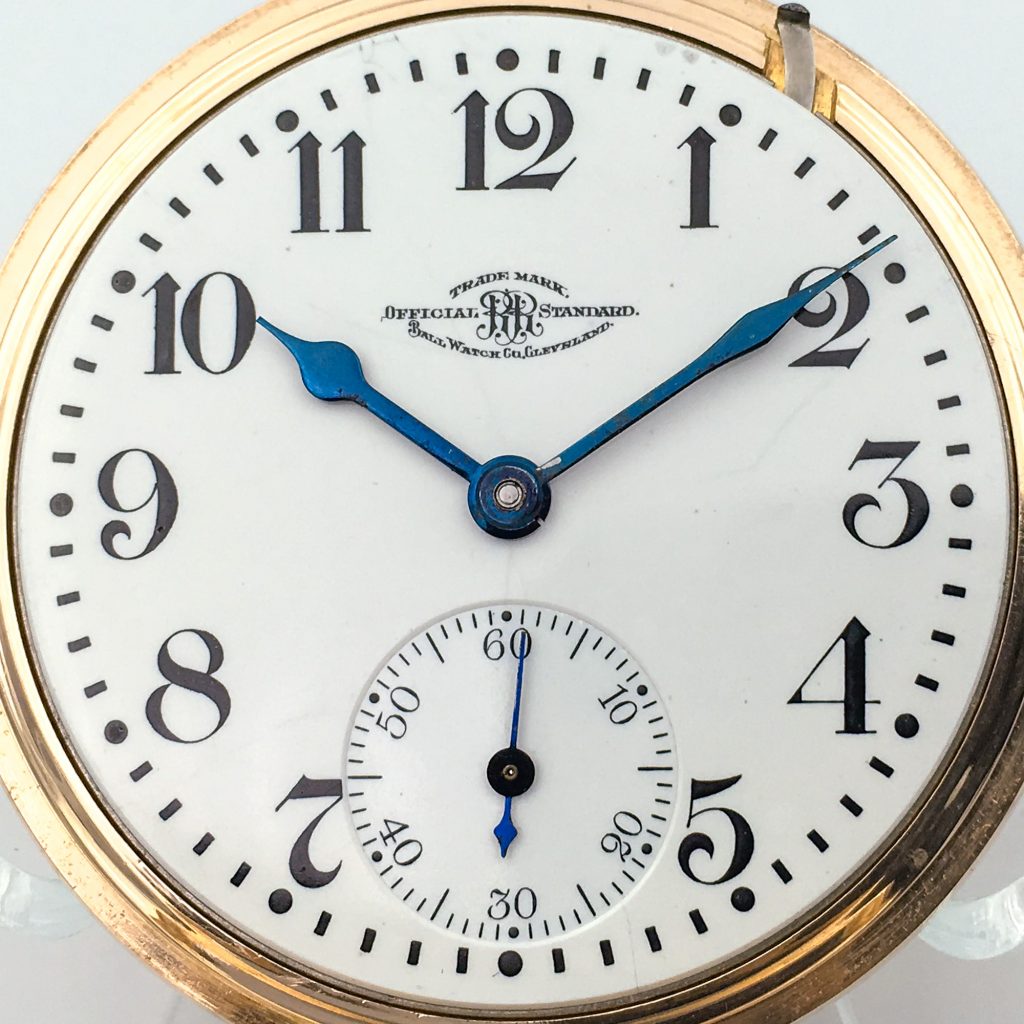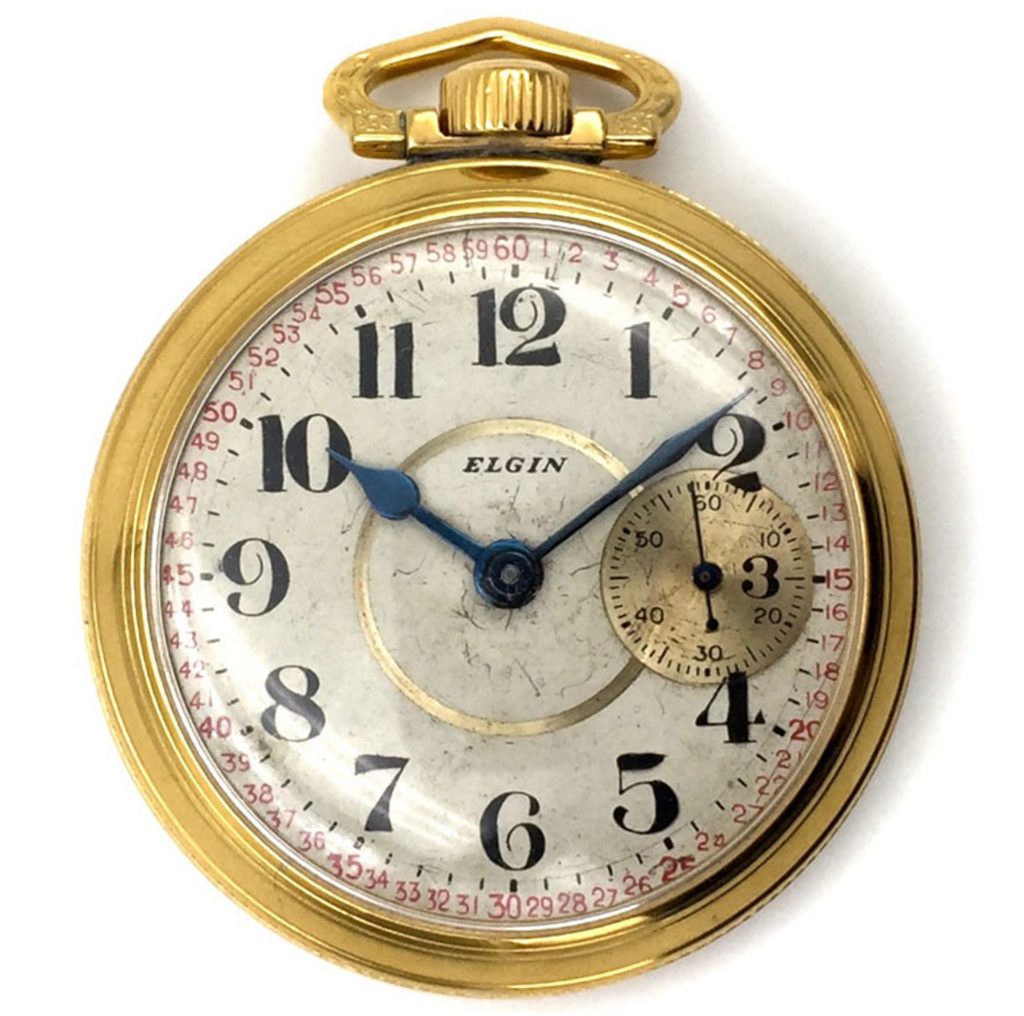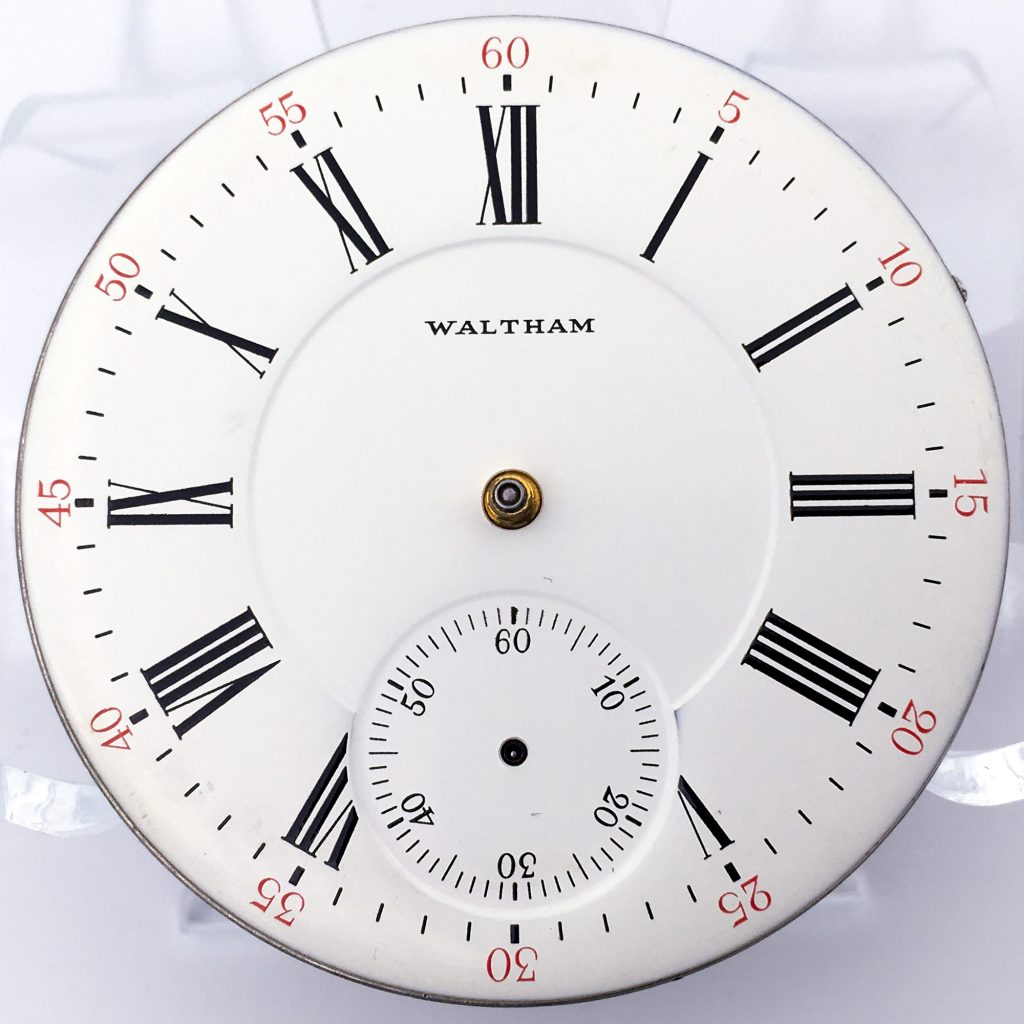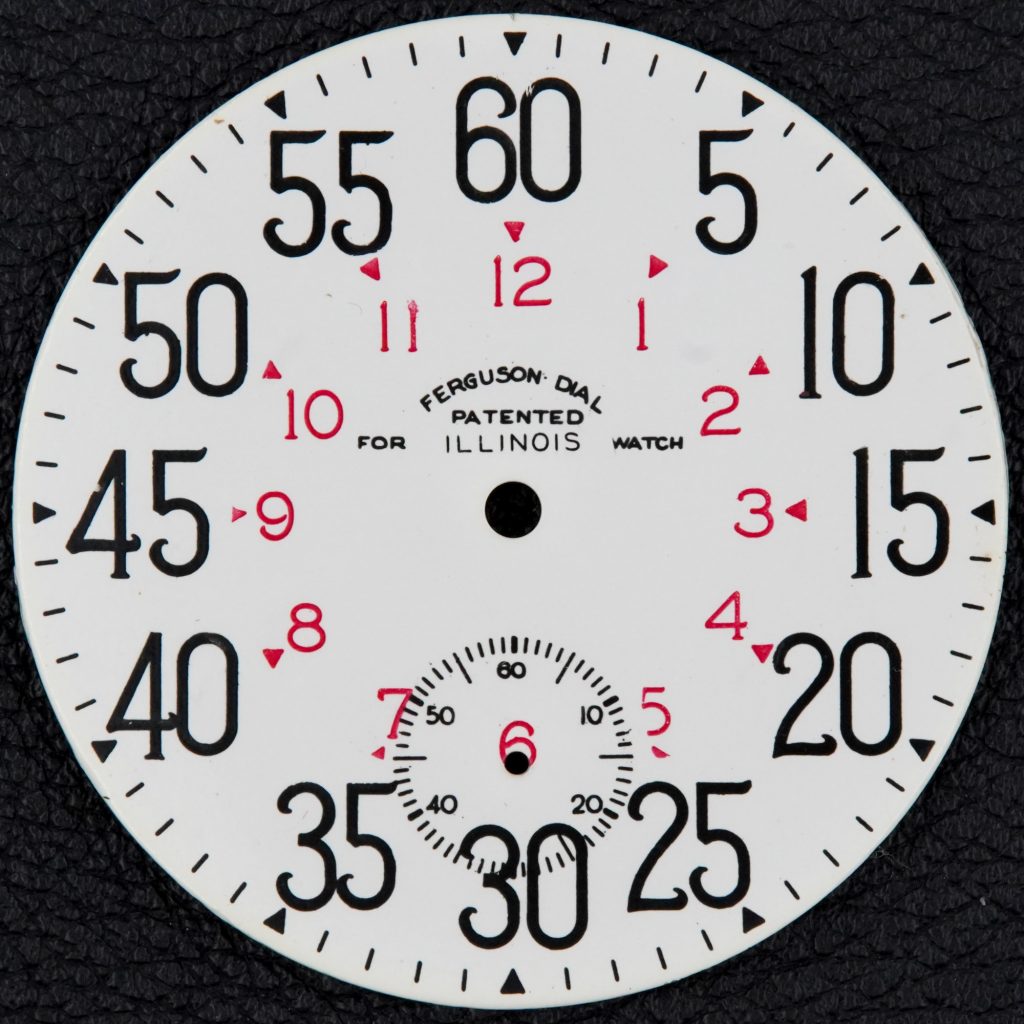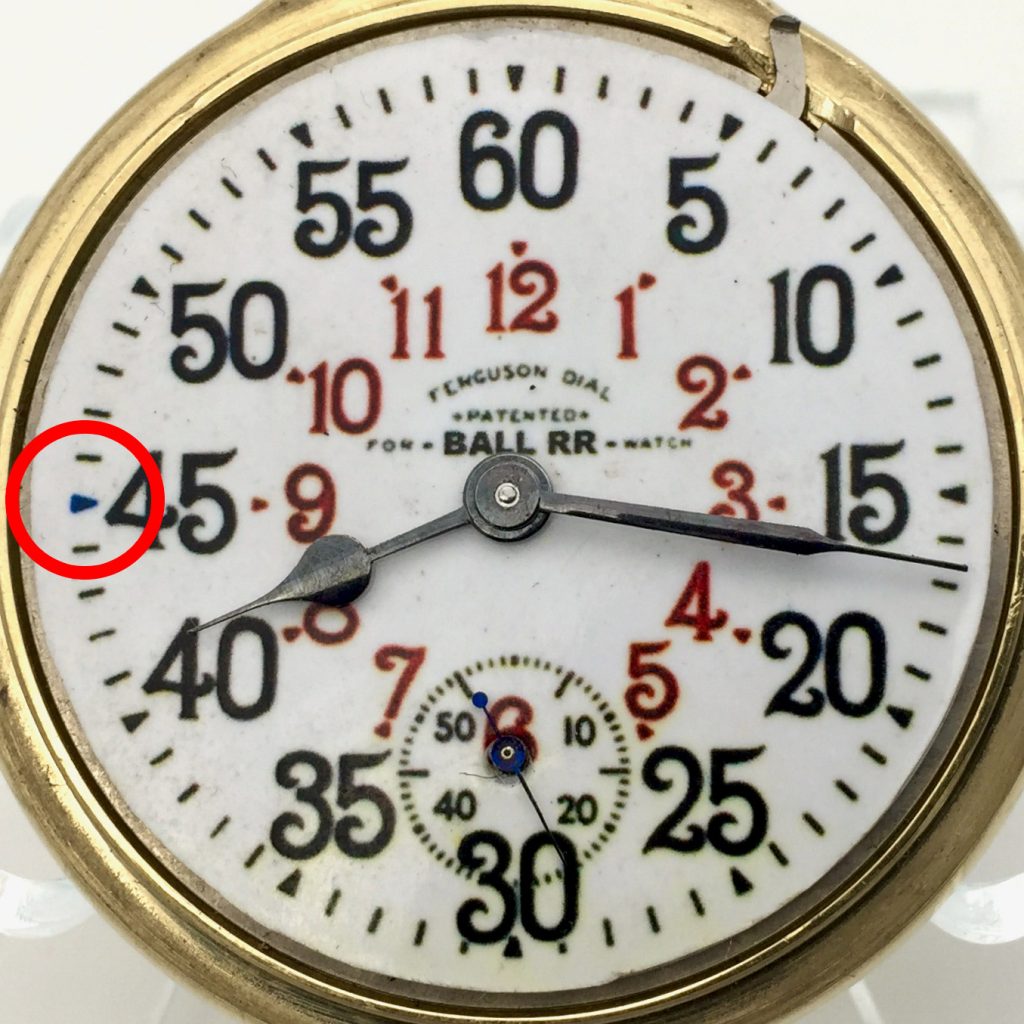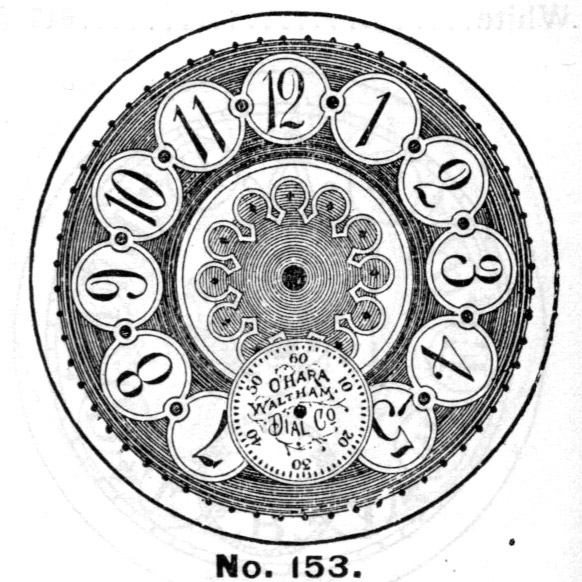
History

Pictured: Elgin Pink Enameled Fancy Dial with Silver and Gold Embellishments, c.1890s. While colored enameled dials were sparsely available in the American market prior to the 1880s, it was not.
Pictured: Elgin Colored Enamel Dial with Gold Embellishments, c.1880s. The 1880s proved to be a pivotal decade for the manufacturing of watch dials. Experimentation with different methods led to innovative.
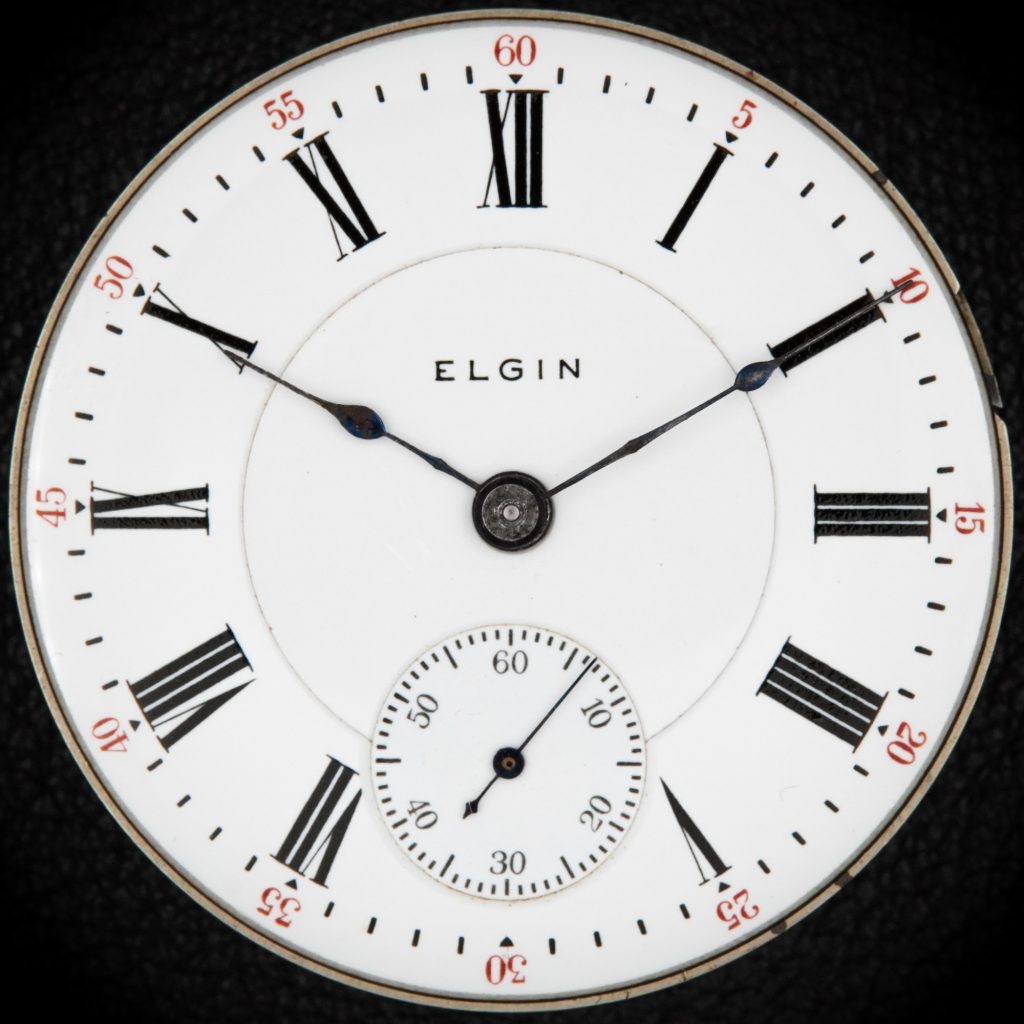
Pictured: Ball “Official RR Standard” Railroad Dial, c.1905. Webb C. Ball was arguably the most prolific figure associated with time inspection on the railroads. As general time inspector for many.
Pictured: Elgin National Watch Co. Watch with Conversion Dial. As more railroads required watches to feature a pendant at the 12:00 position to qualify for service, conversion dials became a.
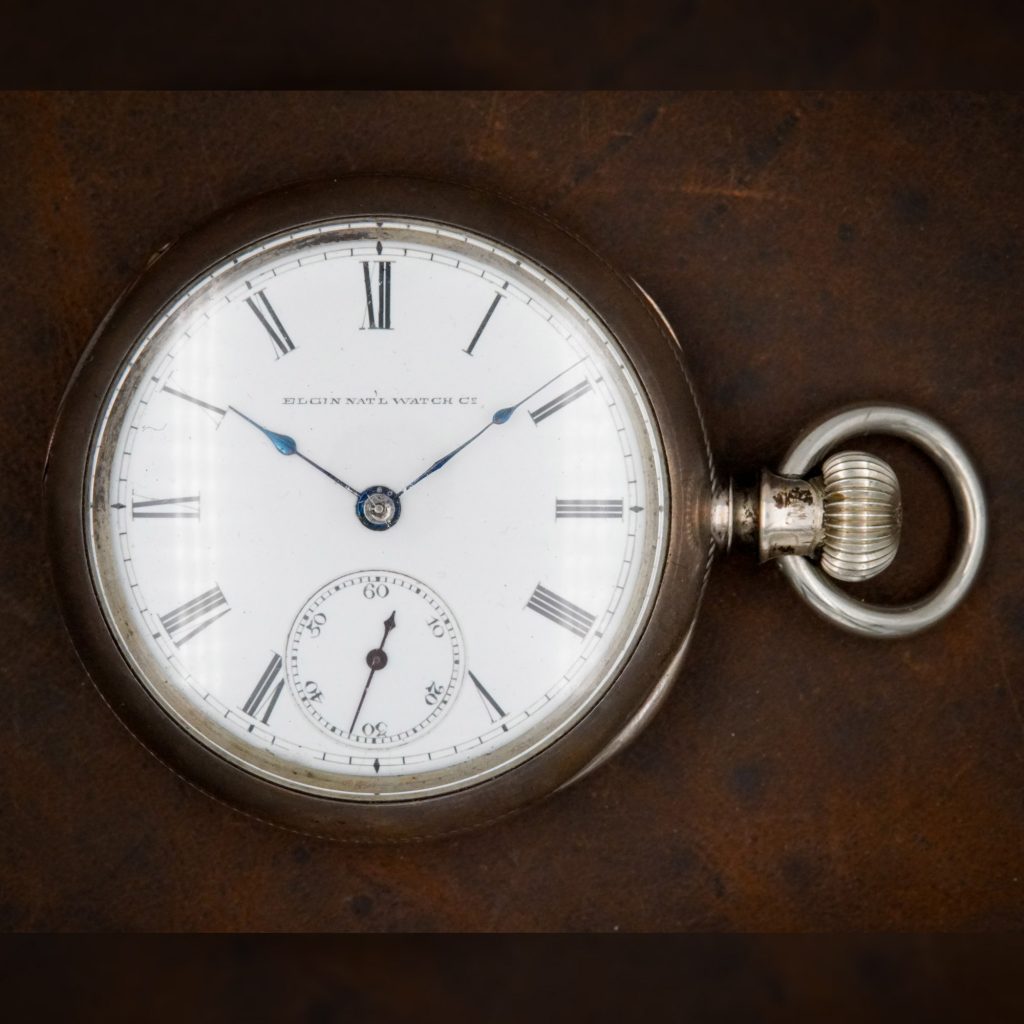
Pictured: S. LaRose Metal Waltham Replacement Dial, c.1980s. S. LaRose Inc., the clock and watch supply company that distributed the replica Ferguson Dial featured in the previous post, also supplied.
Pictured: LaRose Reproduction Illinois Ferguson Dial, c.1970s. Another popular source for post-era reproduction dials was S. LaRose Inc. This watch and clock supply company began in 1936 and operated for.

